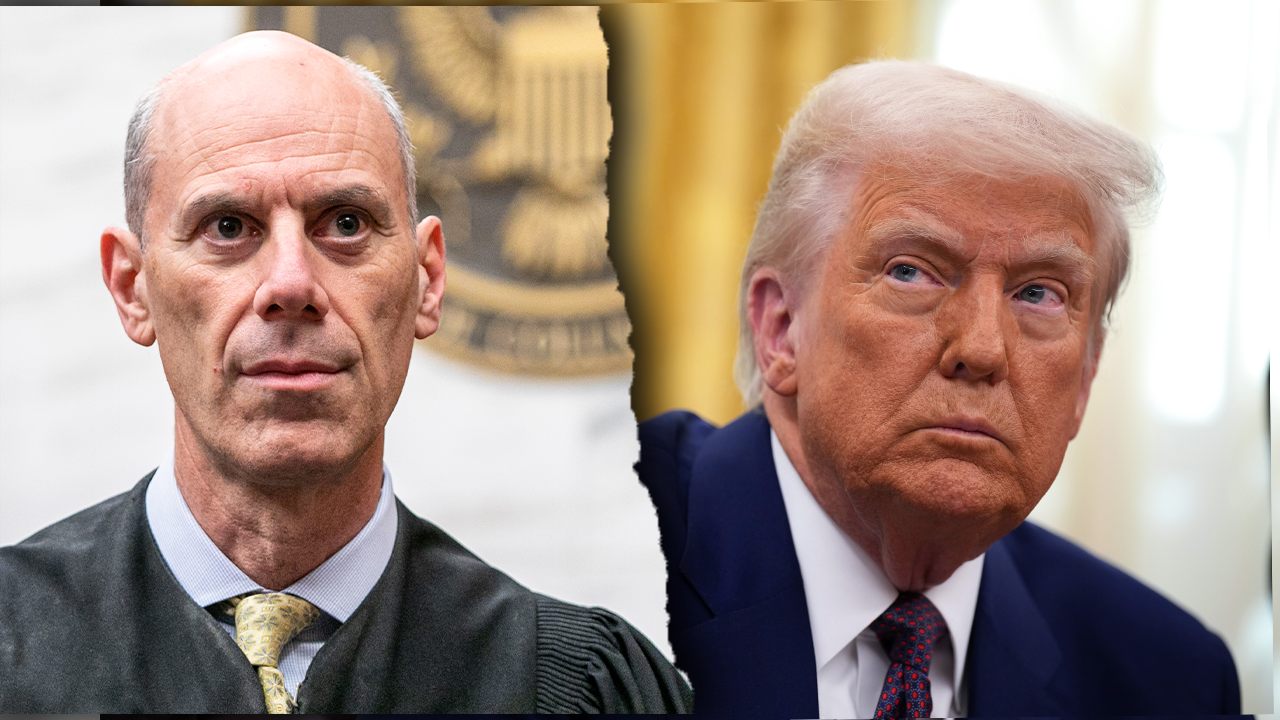Entertainment
Solving Steve Martin doesn't take that much guesswork
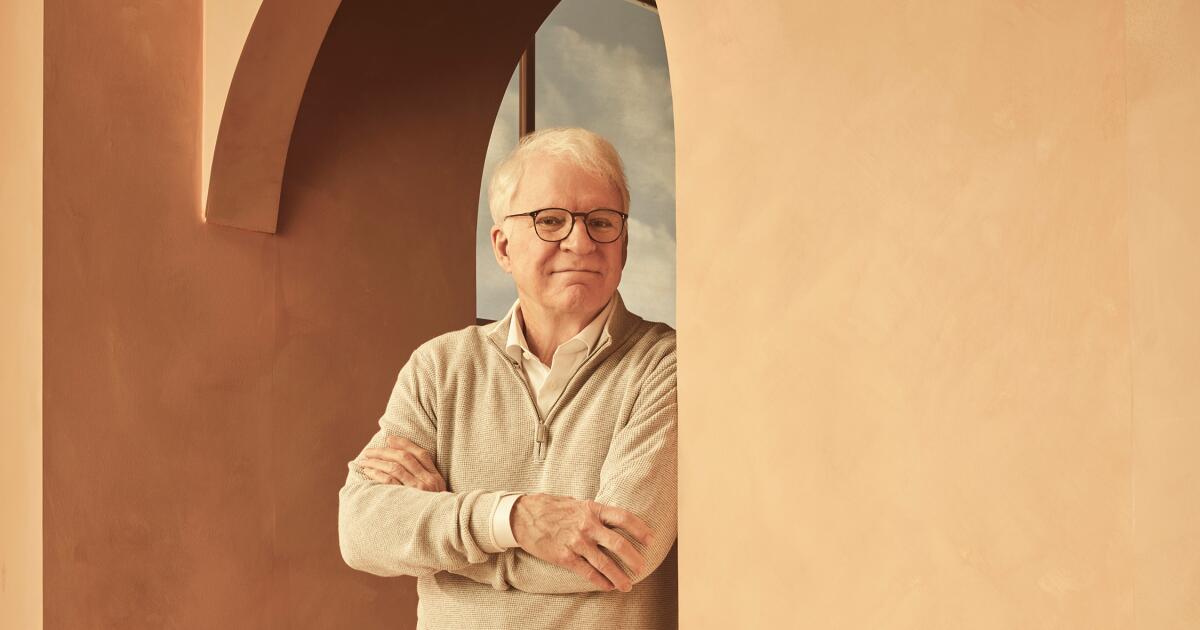
Steve Martin had a bit of a scare this morning. It wasn’t “Saturday Night Live” producer Lorne Michaels calling to ask him to play Minnesota’s Gov. Tim Walz or anything related to his 2-year-old Nova Scotia duck tolling retriever, Sonny, who, since we last spoke, has mostly outgrown his chewing and now seems content to listen to banjo music all the livelong day.
No, the alarm had to do with Wordle, which, yes, Martin eventually solved. But it took him five tries. (I got it in six. I mean, “macaw”? Really?) Martin’s wife, Anne Stringfield, solved it in four. Martin makes a point of telling me it took him only two guesses to nail the puzzle yesterday. He’s a Wordle disciple, sometimes literally carrying the banner on top of his head.
Filmmaker Morgan Neville watched Martin solve dozens of Wordle puzzles in the many months he spent with him making the Emmy-nominated documentary “Steve! (Martin) A Documentary in 2 Pieces,” and believes they’re a key to understanding Martin’s drive.
“One thing I started to see as a pattern in his life was that he likes working on puzzles,” Neville told me over the phone. “And if you look at the things that Steve has invested himself in his life — magic, banjo, stand-up — these are things that take thousands of hours to master. And that’s what Steve likes. He likes working the problem.”
Right now, frankly, I’m trying not to be the problem Steve Martin is working. He joined me on Zoom from the exercise room in his Santa Barbara home, genial, open and keeping an ear out for Sonny.

“If you look at the things that Steve has invested himself in his life — magic, banjo, stand-up — these are things that take thousands of hours to master. And that’s what Steve likes. He likes working the problem,” says documentary director Morgan Neville.
(Mark Seliger / Disney/Disney)
Morgan Neville told me about getting together with you and just talking for hours before he even began filming. Did you find all that talking about the past therapeutic?
When I finished my memoir [“Born Standing Up,” 2007], I thought, “OK. Now I never have to think about that again.” People asked me, “Why did you do this documentary?” And I go, “When else?” [Laughs]
You’re 79. If not now, when?
I was offered to do one 20 or 30 years ago, and I asked what I’d have to do. And it was three months of interviews and access to all my archives. “Gee,” I thought, “that sounds like a lot of work.” And I didn’t do it. The main reason I did it this time was that I loved Morgan’s [2018 documentary] “Won’t You Be My Neighbor?” I loved how he treated Fred Rogers. He just saw him with regard and didn’t go into darkness, though I don’t know if there was any darkness there to go into.
But it still gave you a complete picture of Fred Rogers.
It ennobled him. I’m not saying that now I’m ennobled. He was kind of saint-like.
It humanized him. It detailed his struggles. I watched an interview you did about the documentary, and you were asked why the film detailed all your failures. Including them provides a complete picture.
Lorne Michaels, whom I just got off the phone with, told me years ago, he said, “I like to hire people who’ve just come off a failure because they’re very, very driven and enthusiastic.” [Laughs]
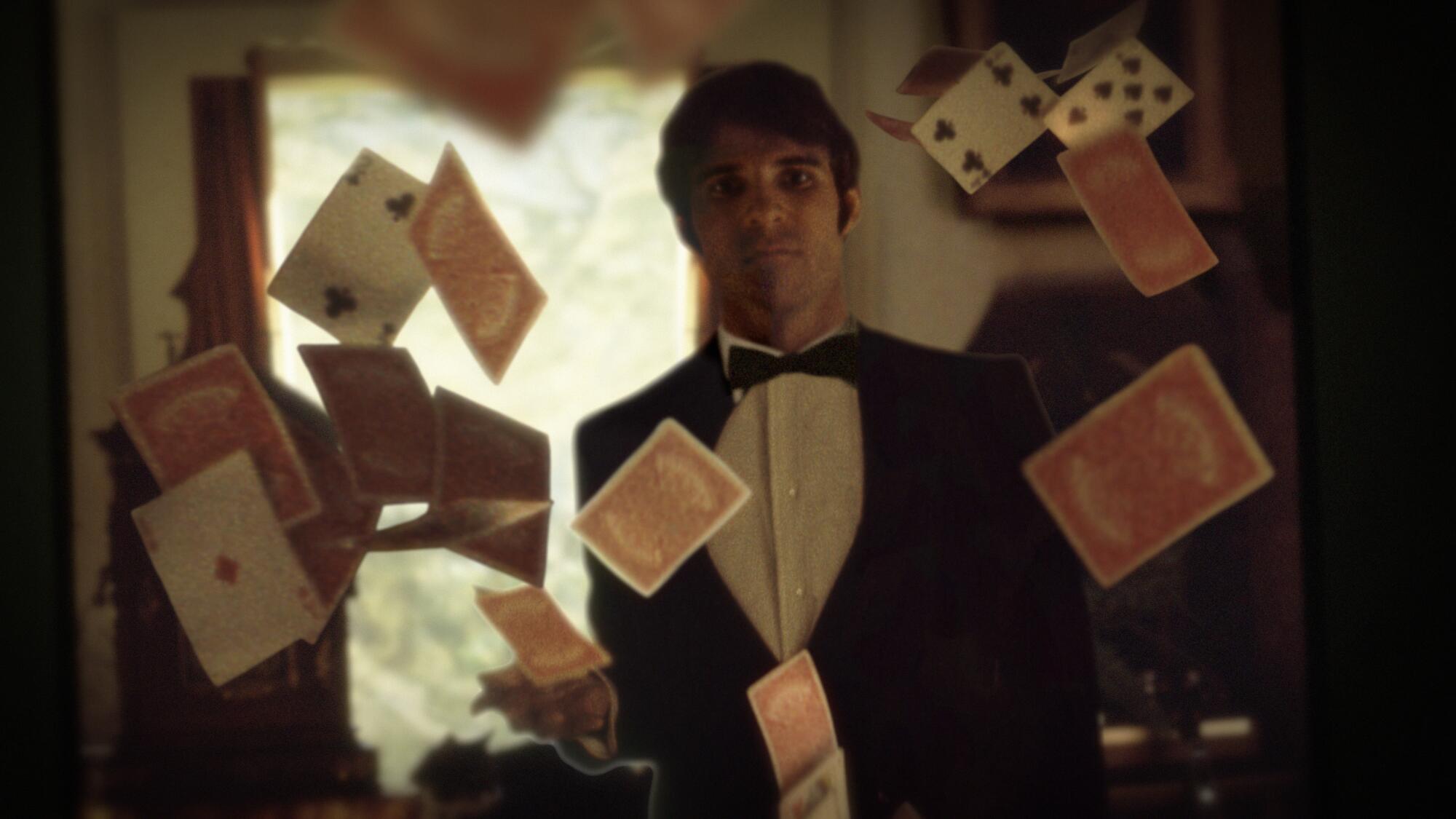
“Steve! (Martin): A Documentary in 2 Pieces” looks at Martin’s early career as well as his later life.
(Apple TV+)
Were you talking to Lorne about playing Tim Walz?
Yes. I wanted to say no and, by the way, he wanted me to say no. I said, “Lorne, I’m not an impressionist. You need someone who can really nail the guy.” I was picked because I have gray hair and glasses. And it’s ongoing. It’s not like you do it once and get applause and never do it again. Again, they need a real impressionist to do that. They’re gonna find somebody really, really good. I’d be struggling.
What did you think about writer Adam Gopnik saying in the doc, “Steve’s changed more than any person I know”?
Well, I don’t know who he knows [laughs], but I can honestly say I have changed quite dramatically from my stand-up days, which was a very isolating circumstance, combined with fame. And also a personality that was not really developed. I have changed. I can actually be fun to be with now. Whereas in the stand-up days, I deliberately wasn’t fun to be around.
Why was that?
I didn’t want to do my act in private situations or be that guy.
Everyone expected you to perform, no matter the situation?
Right. You’d go into a restaurant or even backstage at a TV show and feel that pressure of being observed. And I resisted that. But now I’m actually a real person with a wife, child and a dog and great, funny friends. The greatest thing about being a comedian is that you get to hang out with other comedians — or other artists, let’s put it that way. And I like that world.
But you’re obviously still very recognizable. What’s it like going to a restaurant now? Are you just more comfortable in your skin?
Totally. And there’s a big change that comes with age. People treat you a little differently. They’re not aggressive. If they do approach you, they’re kind.
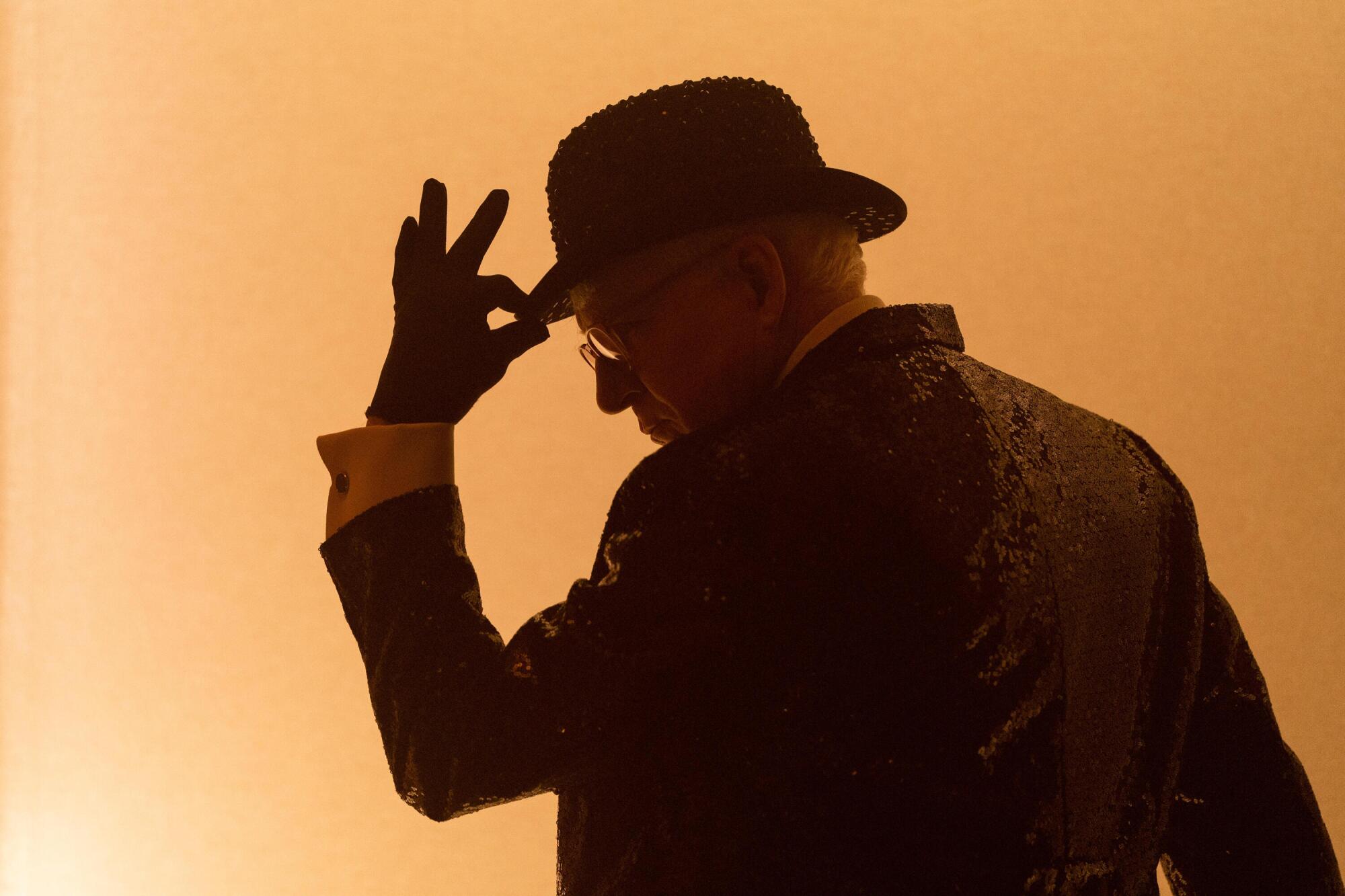
Steve Martin as Charles-Haden Savage prepares for an upcoming musical on “Only Murders in the Building.”
(Patrick Harbron / Hulu/HULU)
Have you ever watched “Hacks”?
The first two seasons. It ended with [Jean Smart’s Deborah Vance] being bolder, taking her act out there.
And then her show kills and becomes a hit special. When she returns after it airs, the audience laughs at everything she says, no matter how innocuous. It throws her. It reminded me of what you wrote about the end of your stand-up career, how you became more of a host than a performer.
That was one word. It’s also in the best sense, not in a cynical sense, being a conductor, because you have this material you have to time. And that becomes the thrill, stitching together your act with … what do they call them? Lacuna. Those little spaces between things. When I was at my best, you’re really in charge of those little spaces.
How do you feel now when you perform with Martin Short?
Fantastic. I’ve analyzed it. It’s the utter opposite of what I used to do. What I used to do was stay away from jokes and really make it a performance. Now it’s all jokes. Not all one-liners, but routines. And it’s just really fun to do.
Did you imagine that being part of a team would make stand-up enjoyable again?
I’ve hosted the Oscars three times. The first two times, I was very nervous. But I overcame it because I’m a professional. And then the third time, I hosted with Alec Baldwin and I was not nervous at all. Looking back, I realized, “Oh, I had someone else out there with me.”
And that’s what I feel with Marty. We love to time things. We love to nail it. And we like our bits that work. Some of the jokes in our Netflix special, we thought, “Well, we have to take them out now because people have seen them.” Now, four years later, we go, “Gee, I really miss that joke.” We put it back in and nobody even remembers it.
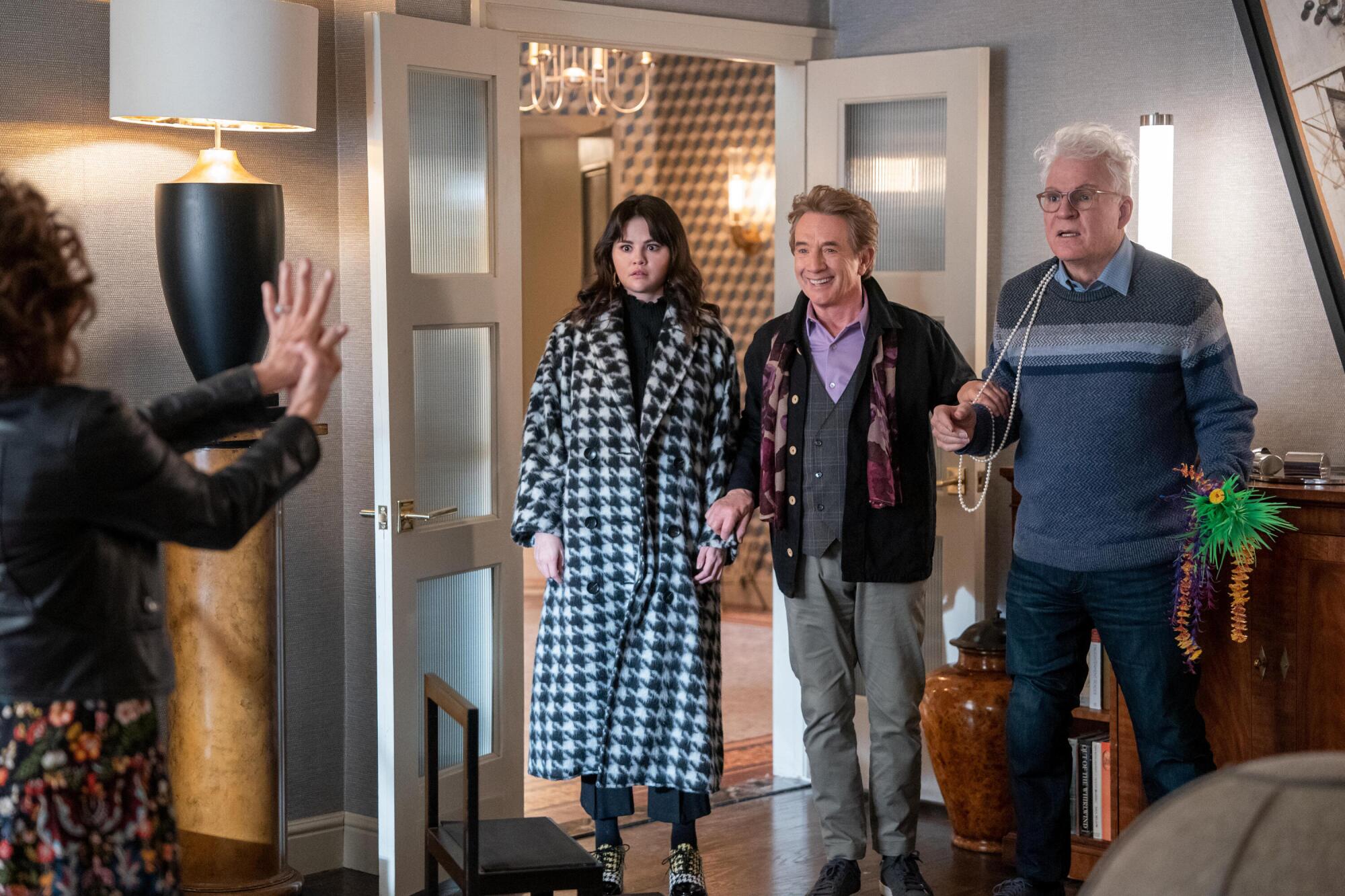
Selena Gomez, Martin Short and Steve Martin star in “Only Murders in the Building.”
(Patrick Harbron / Hulu/HULU)
And you’ve done another season of “Only Murders in the Building” together. [The show’s fourth season premieres Aug. 27 on Hulu.] With this series, do you just take it one season at a time?
Well, yes. Because we’re not even picked up yet for another season, at least that I know of. [Laughs] But they always tease a next season in the last episode, which is a leap of faith. The show has made everyone involved with it very, very happy. And we got to shoot in L.A. this year, at Paramount, which was fun.
If you felt so comfortable hosting the Oscars for a third time with Alec Baldwin, why not make it four and host again with Marty?
That represents so much work for us. And we love our summers. When I hosted before, I started working months ahead of time. And now I have a completely different life. I’m not as free. It’s a lot of work and we’re working.
So that would be a no.
[Laughs] Yeah. I have a joke for the Oscars that I never used. But I always think it’s funny. I’ll come out and say, “I know what you’re thinking. You’re thinking, ‘Steve, how did you get to host the Oscars?’ It was easy. I just called my agent and I said, ‘Get me something thankless.’”
That seems to be the prevailing consensus right now. The motion picture academy has had trouble finding a host.
They don’t pay, either. The Golden Globes pay, so they get Tina Fey and Amy [Poehler]. And Ricky Gervais. The Oscars should pay. When you consider the amount of work, it’s at least several months of mental churning.
You’d need to start tomorrow.
Yesterday. Oh, and one last thing: They have not asked. [Laughs]
You talk about rummaging through boxes of memorabilia for the documentary and coming to the conclusion that I think a lot of us arrived at over the years: I’ve saved all the wrong things.
I saved things related to my career when I should have saved things related to people. Photographs. Of course, we didn’t have access to cameras then like we do now. It was rare. And if someone took your photo, it was a huge process to get a copy.
But you know, you save your picture on a magazine that’s completely meaningless. Michael Caine told me, “I realized who was making money in Hollywood. I’d go to actors’ homes, and they’d have pictures of themselves on the wall. And I go to producers’ homes that have Van Goghs and Monets.”
It feels like you made a shift, though, applying your work ethic to relationships in your life, particularly your parents.
That started with a friend whose mother committed suicide and father got hit by a car. He said, “If you have any resolution to achieve with your parents, do it now.” And I thought that was good advice because I had almost no rapport.
So you started taking your parents to lunch every weekend for 15 years …
And it was one of the best things I ever did, though I realized when I take them both out, they each would misremember things and then end up correcting each other. So I’d take one out on one Sunday and the other one on the next Sunday. So they’d be alone and I could get information. [Laughs]
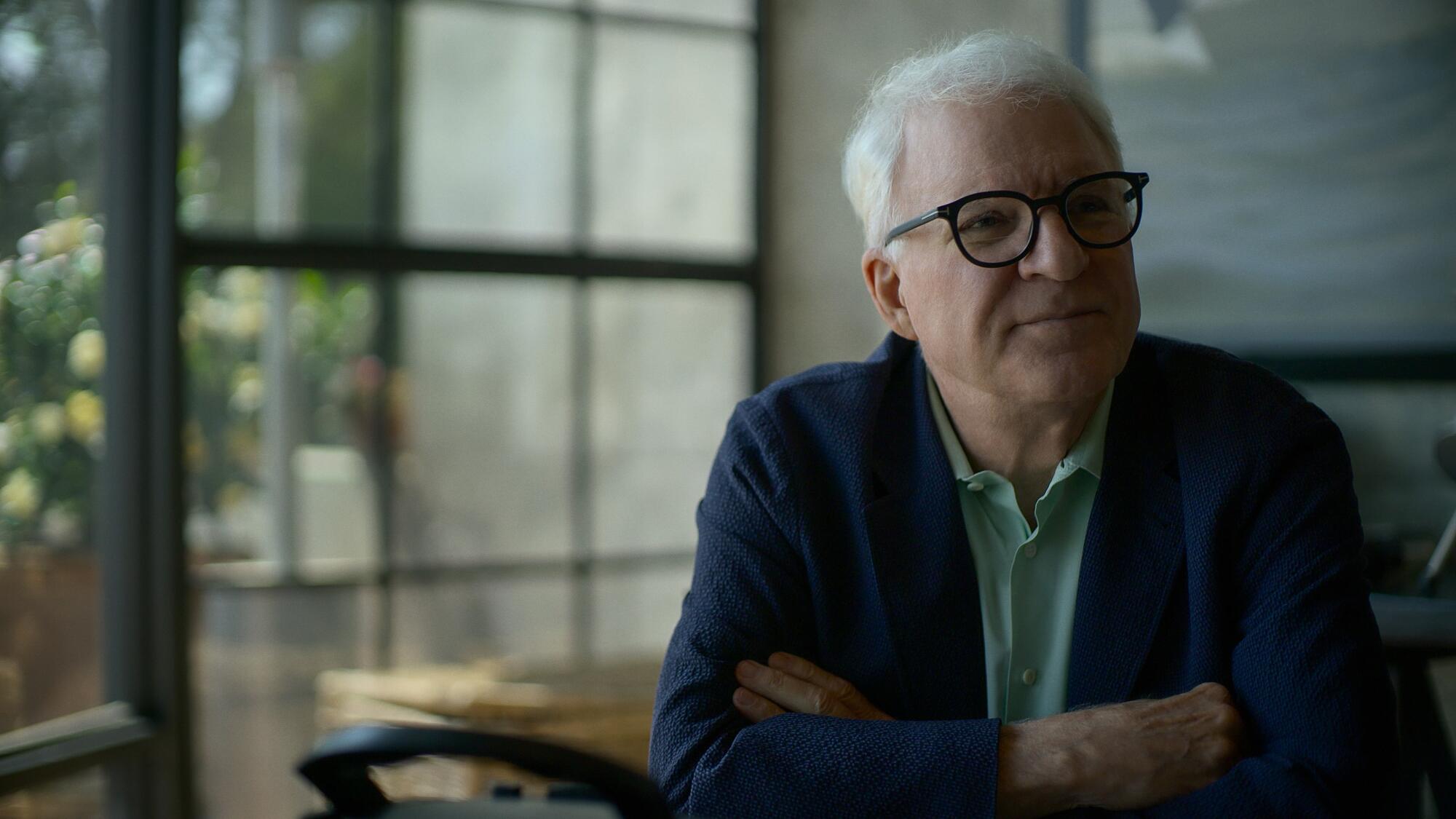
Steve Martin spent many months with filmmaker Morgan Neville shooting the documentary.
(Apple TV+)
You said you needed to make 40 movies to get five good ones. What five stand out?
Oh, I’d say “Father of the Bride,” “Planes, Trains and Automobiles,” “Roxanne.” I like “Bowfinger.” “The Jerk.” I love all the movies I made with Frank Oz — “Dirty Rotten Scoundrels,” “Little Shop [of Horrors]” and “Housesitter.”
What about “L.A. Story”?
I just don’t know what to make of “L.A. Story.” Because it’s … um … [Long pause] I let other people decide.
I’ve never heard you at a loss of what to make of your other movies. Why does “L.A. Story” baffle you?
It’s very personal. It’s not story-driven. It’s funny … Hauser & Wirth, the gallery in Los Angeles, is doing a show starting in September based around “L.A. Story.” They’ve got all these artists that quite liberally fit into the concept of L.A. And they’re doing a good job of it.
The movie certainly saw L.A. in a more positive light than, say, “Annie Hall.” It felt like it came from someone who loved the city.
I’ve always loved Los Angeles. My initial concept of it was a love story set in L.A. I knew that the city would take on a character. And I had the idea of the talking traffic signs. I wanted it to be magical, and I’m just not sure if I achieved that. But the city is better. When I left in the ’70s, the sky was green. The traffic hasn’t changed. But at least the sky is clear now. [Laughs]


Movie Reviews
Detective Sherdil movie review: Who is the killer in this wannabe Knives Out feat. Diljit Dosanjh? No suspense there

Detective Sherdil movie review
Director: Ravi Chhabriya
Cast: Diljit Dosanjh, Diana Penty, Boman Irani, Ratna Pathak Shah, Chunky Panday, and Banita Sandhu
Star Rating: ★★.5
The bigger mystery than the one explored in Detective Sherdil is why the lead star hasn’t promoted the film. There isn’t a post on Diljit Dosanjh’s Instagram profile in recent times about it, but posts galore about his next theatrical release, Sardaarji 3.
Anyway, coming back to Detective Sherdil, it’s a story revolving around a detective who gets involved in a case involving a billionaire’s (Boman Irani) murder in broad daylight. Suspects are his family, comprising a wife, brother-in-law, daughter and many more.
Detective Sherdil story and review
Detective Sherdil appears to be more intelligent than it really is. A multitude of characters form the cast- Banita Sandhu as Pankaj Bhatti’s daughter Shanti, Diana Penty as Natasha, Chunky Panday as Bodhi Mama, Sumeet Vyas and more give it a proper Knives Out setting, and that’s also my pet peeve with a host of thriller films- they all inevitably end up looking and feeling the same.
Housefull 5- a group of people are investigated for a billionaire’s murder aboard a cruise, Vidya Balan’s Neeyat in 2023, which was again about- you guessed it right- a billionaire’s murder. So then, the only real innovation can happen in the big reveal.
The performances
Diljit’s Detective Sherdil spouts one-liners, comes close to breaking the fourth wall, but there is nothing concrete, really, that he comes up with. If anything, he’s an average detective. He comes up with an analysis of what could have happened at the crime scene and with the different suspects, but none of it is convincing enough. And the done-to-death storyline doesn’t help either. Sagar Bajaj, Ravi Zafar and Ali Abbas Zafar have been credited for the writing.
The runtime is under two hours, so thankfully, it doesn’t get stretched. But the plot development is linear, with a lack of shocking twists. Diljit’s cool dude energy comes off a bit pretentious at times. Diana, as a no-nonsense detective working with Sherdil, is passable.
Boman Irani, as the patriarch, infuses some life into this film. Ratna Pathak Shah, as his cunning wife, is also good. The rest of the cast does their job. Chunky, as Boman’s mysterious brother-in-law, makes his presence felt.
Overall, Detective Sherdil is a glossy but underwhelming murder mystery that tries to wear a smart hat but forgets to fill it with real wit or suspense.
Entertainment
Massive sculptures worth $2.1 million stolen from warehouse in mysterious heist

The two towering sculptures comprising thousands of pounds of bronze and stainless steel took artist and filmmaker Sir Daniel Winn more than a year to complete.
They vanished in a weekend.
Police believe that on June 14 or 15 at least one thief made off with both “Icarus Within” and “Quantum Mechanics: Homme,” — sculptures valued at a combined $2.1 million — from a warehouse in Anaheim Hills. Other artwork and valuables inside the warehouse that would have been easier to move were untouched. Authorities have scant details about the heist.
“Unfortunately, we have little information but we are investigating,” Anaheim Police Sgt. Matt Sutter said.
The life-sized “Quantum Mechanics: Homme” artwork, composed of lucite, bronze and stainless steel, depicts a winged and horned man and was featured in the award-winning short film “Creation” in 2022. It’s valued at $1.8 million.
A second Winn piece, “Icarus Within,” based partially on the sculptor’s chaotic childhood escape from Vietnam, is a steel and bronze sculpture that also stands 8 feet tall, weighs a ton, and is valued at $350,000.
Both sculptures were being stored in a temporary facility and were last seen by warehouse workers in Anaheim Hills on Saturday, according to the Anaheim Police Department.
When the workers returned to the facility Monday, both pieces were missing, according to police.
Winn believes the pieces may have been stolen by an unscrupulous collector while an art recovery expert suspects the two sculptures will be destroyed for scrap metal.
“Typically these sculptures, when we do exhibitions, take about a dozen men and two forklifts to move it and a flatbed or a truck to carry it,” Winn said. “This is not an easy task.”
Winn told The Times that the last few days have been stressful and that his anxiety has been “through the roof.” Winn is considered a blue-chip artist, meaning his work is highly sought after and has a high monetary value.
The former UC Irvine medical student, who was once homeless after switching his major from medicine to art, said he blends fine art, quantum metaphysics and philosophy into his work.
The Vietnamese refugee owns the Winn Slavin Fine Art gallery on Rodeo Drive and was appointed earlier this month as Art Commissioner for John Wayne Airport.
The loss of his art has pushed Winn “to a dark place,” he said, though he’s found some catharsis in talking about the situation.
“These are my children,” he said of each of his individual works. “I have no physical, organic children. Every artwork I create is my child.”
The larger of two sculptures, “Homme,” was the seventh and only unsold work in Winn’s Quantum Mechanics series, which explores philosophical concepts, universal truths and tries to answer the enduring question: why are we here?
The smaller “Icarus Within” focused on Winn’s struggle around the age of 9 in emigrating to the United States in the final days of the Vietnam War. The sculpture was tied to Winn’s movie “Chrysalis,” based on his memoirs, that is supposed to premier this fall.
Winn said the level of sophistication in the theft led him to suspect he was targeted and that his pieces may be on the black market.
He turned over a list of individuals who have recently inquired about his sculptures to police, he said.
Sutter, the Anaheim Police sergeant, said this is the largest burglary he’s seen in his 25 years with the department.
“We’ve had our share of high-end homes that were burglarized, but this type of crime, involving forklifts, trucks, crews and the sheer size of the sculptures is something I can’t remember us having before,” Sutter said.
Sutter said investigators are asking businesses near the warehouse for any footage that could help them identify a suspect.
“I have no idea where these sculptures are,” Sutter said. “They could be in somebody’s house or in a shipping container somewhere. That’s what we’re trying to find out.”
Chris Marinello, founder of the dispute resolution and art recovery service named Art Recovery International, said the sculptures will likely be scrapped for their metals.
Marinello said scrap yards tear apart such works into thousands of small pieces to cloak the metal’s origin.
“Unfortunately, the criminals are not that bright and they don’t see artwork but, instead, a sculpture worth millions that is more valuable to them for the raw metals like steel and bronze,” Marinello said.
Marinello pointed to a two-ton Henry Moore bronze sculpture, known as the Reclining Figure, stolen from the artist’s foundation in Hertfordshire, England in 2005.
The piece was valued at 3 million pounds, but authorities believe it was scrapped for just 1,500 pounds.
“You can’t sell sculptures of this magnitude on the market,” Marinello said of the Winn’s stolen pieces.
Movie Reviews
Bollywood Mystery: 'Detective Sherdil' Review – Diljit Dosanjh in a Whodunit That Falls Short

Diljit Dosanjh plays the titular character, a quirky sleuth with charm and wit. While he brings his trademark likability, the character often slips into caricature, which takes some weight away from the mystery. Diana Penty’s role feels underwritten.
-

 Arizona3 days ago
Arizona3 days agoSuspect in Arizona Rangers' death killed by Missouri troopers
-

 Technology1 week ago
Technology1 week agoGoogle is shutting down Android Instant Apps over ‘low’ usage
-

 Education1 week ago
Education1 week agoOpinion | Artificial intelligence, Trump and the Future: 13 Gen Z-ers Discuss
-

 Culture1 week ago
Culture1 week agoSlow and Steady, Kay Ryan’s “Turtle” Poem Will Win Your Heart
-

 News1 week ago
News1 week ago‘No Kings’ demonstrators to gather across Greater Cincinnati in opposition to Trump
-

 News6 days ago
News6 days agoAt Least 4 Dead and 4 Missing in West Virginia Flash Flooding
-

 Politics1 week ago
Politics1 week agoFate of Trump's $9.4 billion spending cut package hangs on House GOP moderates
-

 News1 week ago
News1 week agoHow Many Law Enforcement Agencies Are Involved in LA Immigration Protests?













